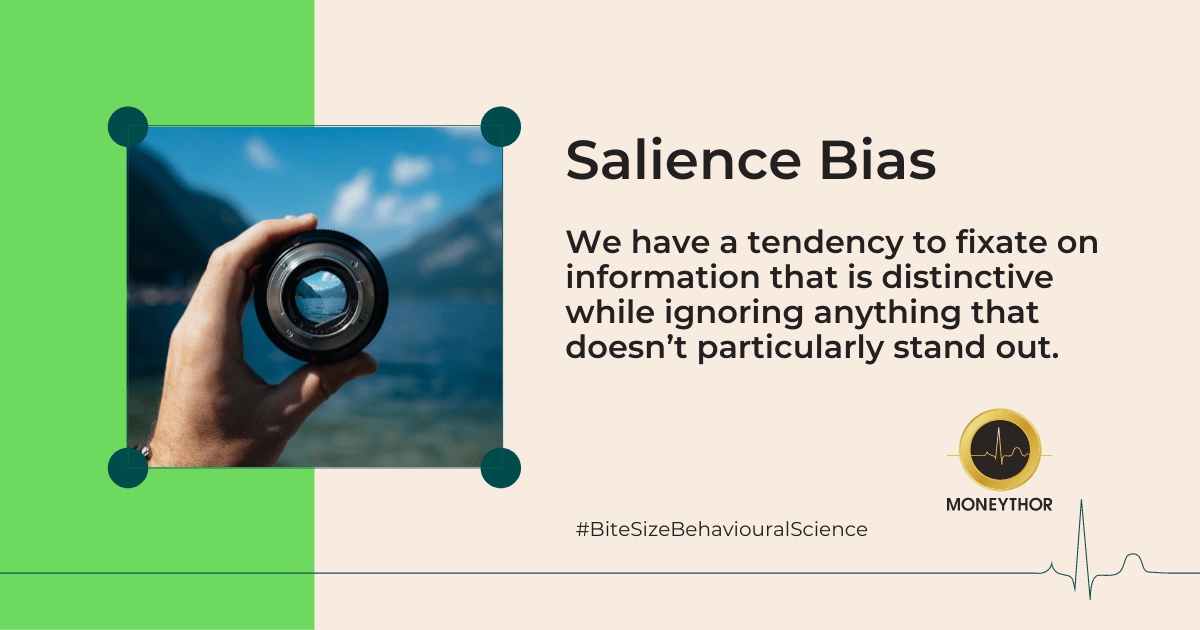What is salience bias?
Our choices are driven by the information that is communicated to us and things that we see. As a result, we have a tendency to fixate on information that is distinctive while ignoring anything that doesn’t particularly stand out.
Why does it happen?
The word salience is defined as “the quality of being particularly important or easy to notice”. When we’re considering, building or designing a product, it is key to acknowledge that the information presented first and most prominently has the ability to affect our decision making process. Our inclination to focus on information that is unique or different leads us to the salience bias. Salience bias, however, is not limited to attention grabbing information. It can also affect our financial wellbeing and our purchasing decisions. For example, when we see a 2-for-1 deal, it is easy to be distracting by the savings rather than focus on whether or not we might need the extra item.
How can financial institutions harness the effect of salience bias to enable better personal financial management?
Positioning saving as the default option in digital banking apps
On the whole, we understand that people are more likely than not to go with the first easiest option that is presented to them. When users are presented with a saving as the default option, financial institutions are harnessing the effect of salience to encourage users to save. Since it is more effort for consumers to opt-out from the pre-programmed default, positioning saving as the default may encourage the formation of good financial habits for users in general.
Ongoing financial wellbeing programmes
When implementing a financial wellbeing program, ensuring that users see the right information at the right time is crucial. Banks can harness the effect of salience by ensuring the right content is shown at the right time to prompt users to act accordingly. Should a user be saving as soon as they get paid? Send a push notification. Are their credit card bills due? An in- app reminder might do the trick. Salient reminders can be used as an approach to nudge users into developing better financial habits in the long run.
Conclusion
It is crucial for banks to acknowledge salience bias and that it has the potential to impact users negatively if they simply focus on the most emotive and leading details at hand. However, it can also be effectively embedded into digital banking applications to support the development of better financial habits for users by ensuring that the right messaging and nudges are being communicated at the right time. Helping consumers interact with the right information at the right time is not only encouraging for users on their financial wellbeing journey, it will also help banks build a more engaging relationship with users in the long run.

